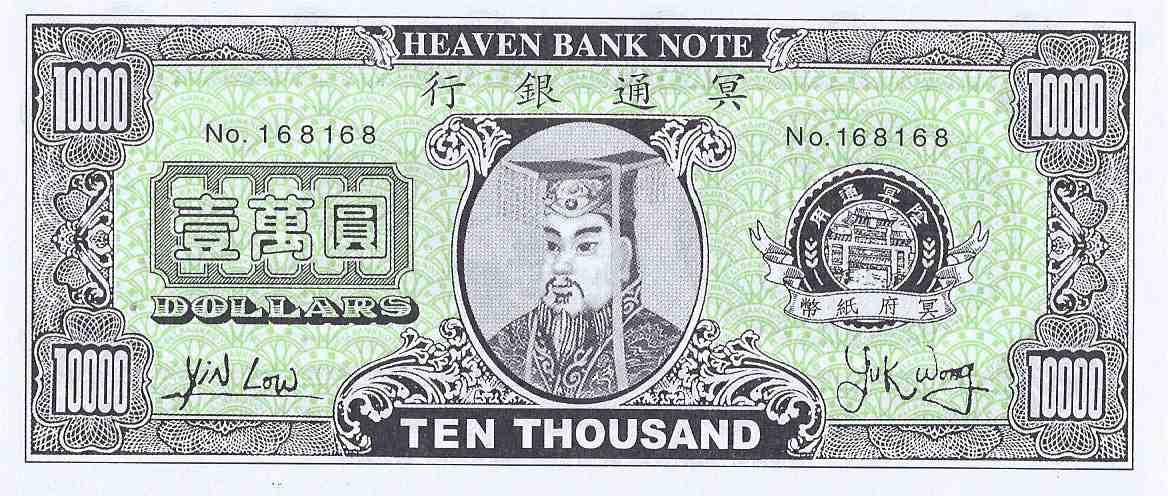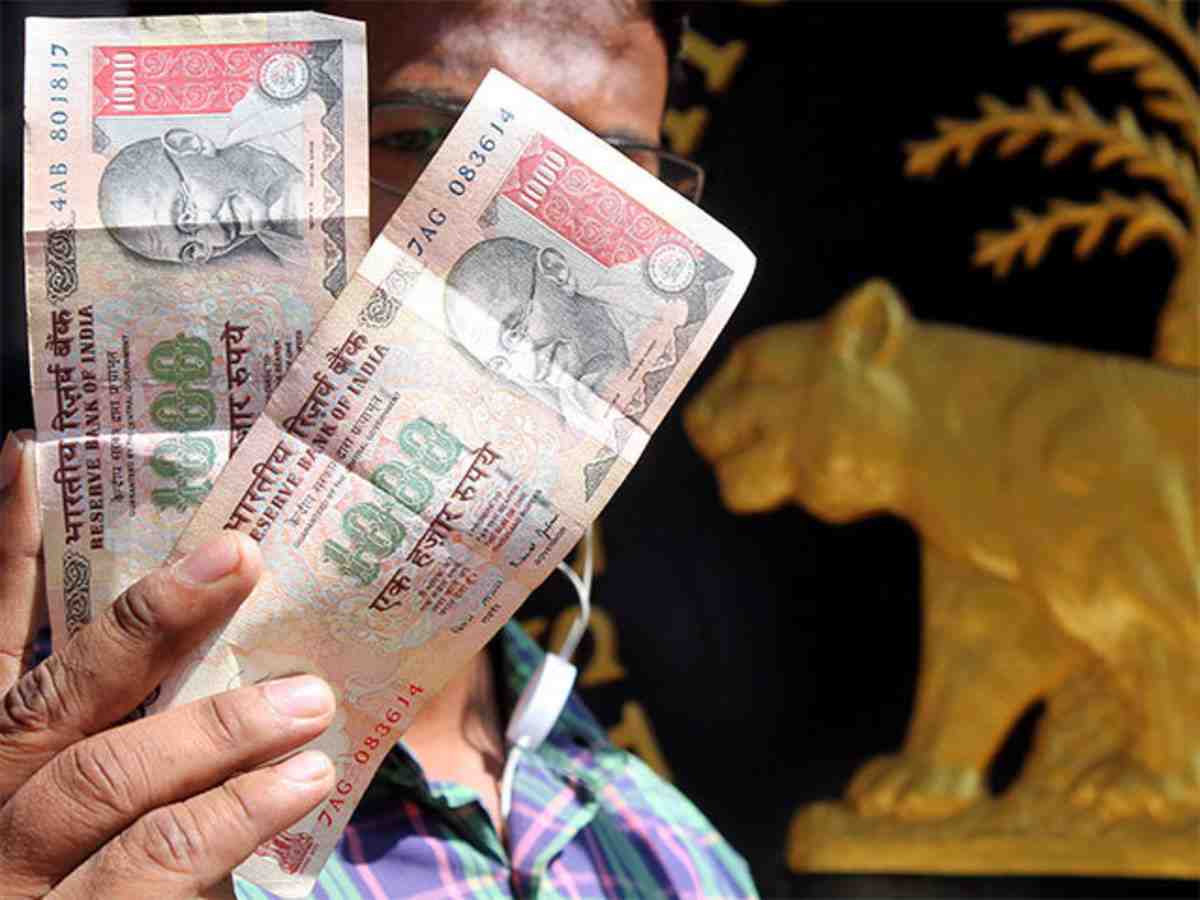Simply put, the problem with printing money for emerging and poorer economies is a sharp rise in inflation – something that could do more harm than good. Another problem with printing more money is currency depreciation due to higher inflation. However, it is not always a harmful prospect.
What is the difference between a mortgage and a note?
Contents
- 1 What is the difference between a mortgage and a note?
- 2 Why do bank notes have value?
- 3 Are $100 dollar bills being discontinued?
- 4 Is a 10 000 dollar bill Real?
- 5 How do you start a note?

The difference between a promissory note & a mortgage. The main difference between a promissory note and a mortgage is that a promissory note is the written contract that contains the details of the mortgage loan, while a mortgage is a loan secured by real estate.
Why do bank notes have value?
In return, receipts or banknotes were issued in paper form. These were used as a convenient means of payment rather than using gold. People accepted these bills as promises to pay, knowing they could always bring them back to the bank for gold. This revenue led to the banknotes we know today.
Why do banknotes have value? Today I am going to tell you about the value of banknotes. … In return, she gave out receipts or banknotes. These were used as a convenient means of payment rather than using gold. People accepted these bills as promises to pay, knowing they could always bring them back to the bank for gold.
Do bank notes have intrinsic value?
It has no intrinsic value – the paper used for banknotes is basically worthless – yet it is accepted in return for goods and services because people trust the central bank to keep money’s value stable over time.
Does any currency have intrinsic value?
Value in Currency So what exactly gives our modern currency – whether it’s an American dollar or a Japanese yen – value? Unlike early coins made from precious metals, most of what is minted today does not have much intrinsic value. However, it retains its value for one of two reasons.
Do currency notes and coins have intrinsic value?
Banknotes and coins are referred to as fiat money. They have no intrinsic value like gold or silver coins.
Does paper money have intrinsic value?
And paper money has never had intrinsic value, as paper has never been insanely expensive to be valued on its own. Currency in the form of paper (or copper) was in this case called fiat, from the Latin “let it happen”, money. It has economic value because the government says so.
Why does money have value when it is just made of paper?
Paper money is issued by governments around the world and used by people to store value and to purchase the goods they need for their daily lives. Paper money has value because large numbers of people agree on its value, making it useful as a medium of exchange.
Why is money effective if it’s just a piece of paper?
We use paper money because it is recognized by all for its value and carrying coins is heavy and can ruin your pockets. Try carrying around a bag full of silver coins for a while. And gold is even heavier. Paper is lightweight, easy to carry, and easy to trade or buy goods and services with.
How does paper money have value?
Paper bills or “fiat” money also have no intrinsic value; their value is determined solely by supply and demand, and they are made legal tender by government decree. The most important element that distinguishes one national currency from another is its value.
Does paper money have absolute value?
The banknote with the lowest (absolute) value and the coin with the highest (absolute) value.
Are $100 dollar bills being discontinued?

The Federal Reserve announced on July 14, 1969 that large denominations of US currency were being phased out. While larger denominations remained legal tender, with their removal, the hundred-dollar bill was the largest denomination still in circulation.
Will the $500 bill be discontinued? Although no longer in circulation, the $500 bill remains legal tender.
Can you get a $500 dollar bill from the bank?
Can I still get a five hundred dollar bill from the bank? Although the $500 bill is still legal tender, you won’t get one at the bank. Since 1969, the $500 bill has been officially phased out, as per the Federal Reserve’s high-denomination bills.
How much is a $500 dollar bill worth?
As of 2020, the now-rare $500 bill is worth anywhere from $650 to $850, but it can be worth much more depending on the condition of the individual bill and other factors. In fact, the value can potentially extend to thousands of dollars.
Can you get a $1000 dollar bill from the bank?
The highest denomination currently produced is the $100 bill, but over the past few decades the Federal Reserve has issued $1,000, $5,000, $10,000, and even $100,000 bills.
What is the largest bill in circulation?
Today, the $100 bill is the highest bill in circulation. In 1914, following the passage of the Federal Reserve Act in 1913, the Federal Reserve Banks began issuing Federal Reserve Notes in denominations of $1 to $10,000.
What can you do with old 100 dollar bills?
Unsuitable or contaminated currency can be exchanged at commercial banks, the FRBSF says. However, some banks may only exchange worn or torn banknotes for their customers. Ideally, visit the bank you usually use and deposit the funds into your account.
Can you still change old $100 dollar bills?
All banknotes with serial dates before 2020 are now no longer legal tender. The central bank is indefinitely facilitating redemptions of $1, $5, $10, $20 and $50 bills with series dates prior to 2020.
Do banks take old money?
If a bill is too worn, a bank may request that old bills be replaced with new ones. Banks separate banknotes that need to be replaced because they are soiled, torn or otherwise damaged. They give these bills to the Federal Reserve Bank for replacement. The Federal Reserve Bank makes its own decision on the bills.
Are old $100 bills worth anything?
Most series are worth at least $600 in very good condition. The earliest series sells for more money. The blue seal Series 1914 $100 bills are worth less money.
Is there a new hundred dollar bill?
In its first redesign since 1996, the redesigned $100 bill features additional security features, including a 3-D security band and a color-changing bell in the inkwell. The redesigned $100 bill also features a portrait watermark of Benjamin Franklin, visible from both sides of the bill when held up to the light.
When did the new 100 bill come out?
On October 8, 2013, Ben Franklin’s modified updates were released, which include enhanced security features intended to prevent counterfeiting. These revised features of the new $100 bill include a blue…
Are there any special $100 bills?
The low number ones are among the most valuable, with new $100 bills starting at 00000001 expected to sell for up to $15,000. (You will see a letter or two before the serial number; these indicate which Federal Reserve Bank issued it.
What is the new $100 bill?
| (United States) | |
|---|---|
| broad | 156mm |
| height | 66.3mm |
| Weight | ≈ 1.0g |
Is a 10 000 dollar bill Real?

public domain. The $10,000 bill, the largest denomination ever printed for public consumption, never saw much use. … The bill was first printed in 1918 and was part of the major currency purge of 1969.
How much is a $10,000 bill worth today? A $10,000 bill in pristine (great) condition can be worth over $140,000 to collectors. But even if your bill is in bad shape, it can still be worth around $30,000.
Are 10000 dollar bills still made?
Although still legal tender in the United States, high-denomination bills were last printed on December 27, 1945, and officially retired by the Federal Reserve System on July 14, 1969 for “unused”. The $5,000 and $10,000 bills were long gone.
Can I get a $500 bill from the bank?
Can I still get a five hundred dollar bill from the bank? Although the $500 bill is still legal tender, you won’t get one at the bank. Since 1969, the $500 bill has been officially phased out, as per the Federal Reserve’s high-denomination bills.
Can you get a 10000 dollar bill from the bank?
There are 1.2 billion $2 bills left in circulation. …Reminiscent of 1969, there are fewer than 400 $5,000 bills. The $10,000 bill was the largest denomination ever printed for public consumption. Collectors cannot legally hold a $100,000 bill.
When was the $10 000 bill discontinued?
On July 14, 1969, the Department of the Treasury and the Federal Reserve System announced that $500, $1,000, $5,000, and $10,000 bills would be immediately discontinued for lack of use. Although published until 1969, they were last printed in 1945.
How do you start a note?

Personal letters should always begin with the salutation “Dear Sir or Madam”. Follow “Dear” with your recipient’s name and a comma. Think about how you usually address your recipient when you talk to him or her. For example, you could address your recipient with “Dear Stephanie”, “Dear Grandma” or “Dear Mr. Müller”.
How is a note written? Clarify what your note is about. Keep it short and simple. It doesn’t necessarily have to be in full sentences, but make sure the recipient understands what it means. Avoid going off topic, especially if it’s a reminder note.
How do you start a note to someone?
How to start a professional letter
- Start with your contact details.
- Add the date.
- Add the recipient’s contact information.
- Start with the most appropriate greeting.
- Use the most professional form of the recipient’s name.
- Begin the letter on a pleasant note.
- Open with the aim of writing the letter.
How do you start an informal letter?
How do I start an informal letter? Answer: You can start the letter by first greeting the person with Hi/Hey/Hello/Dear (name of person). Then ask if he/she is okay.
How do you start a letter note?
Formal letters begin with “Dear” followed by the recipient’s name. If you don’t have a contact at a particular company, search online for a name, job title, or department. As a last resort, use the generic salutation “To Whom It May Concern.” A comma follows all greetings.
How do you start writing to someone?
To start a personal letter, always use “Dear Sir or Madam” and the person’s name or the name you are using, such as Grandma or Coach. However, when writing a business letter, only use “Dear Sir or Madam” if you expect a close relationship with the recipient.
